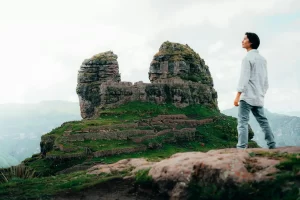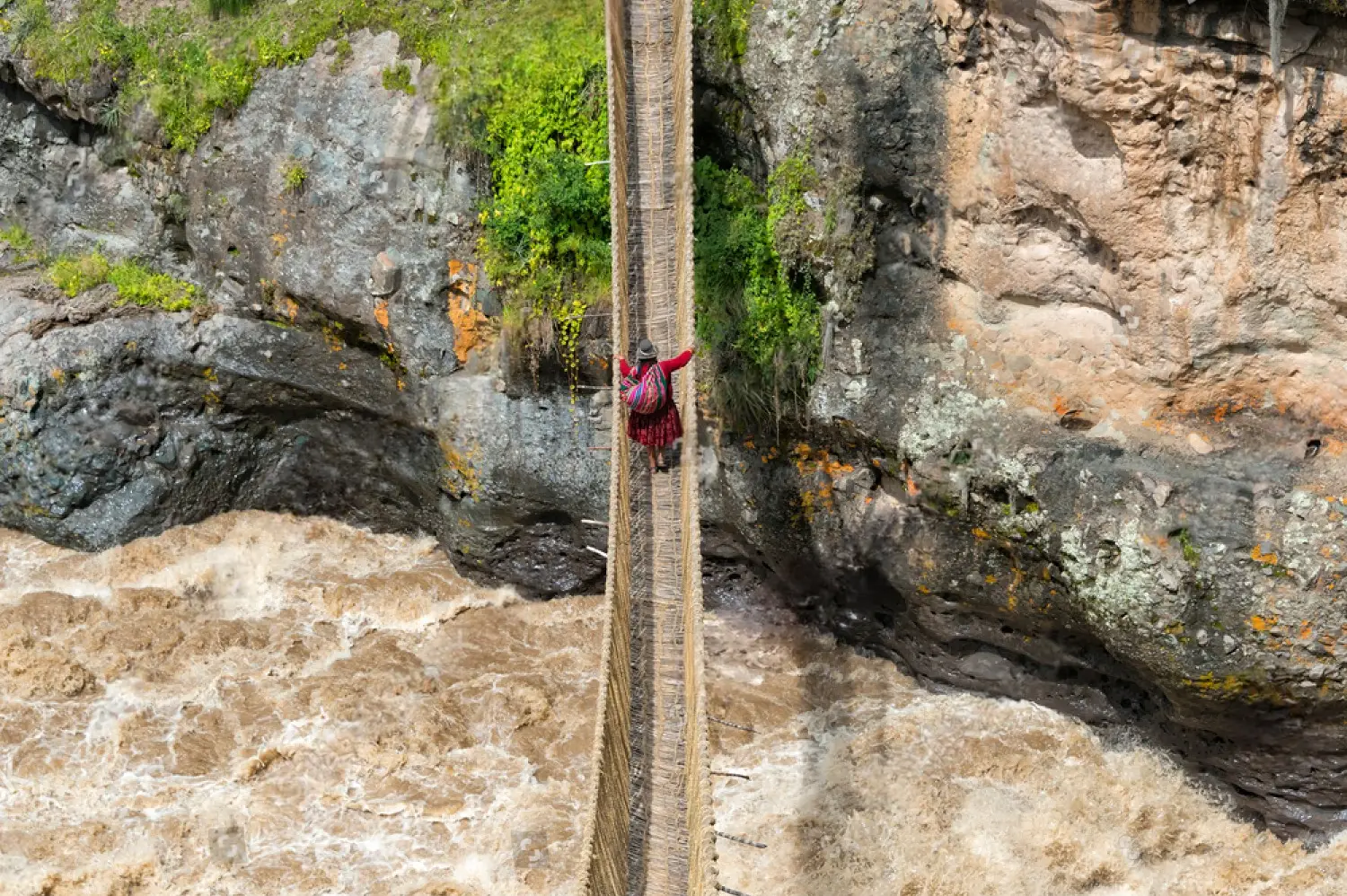
Inca Bridge of Queshuachaca general summary
The Incas united the towns of the great Tawantinsuyo through roads and bridges; Q’eswachaka is an example and the only still existing bridge of the art and ingenuity of the Incas. Q’eswachaka is rebuilt every year by the residents of the area in the month of June in a unique festival of music and dance, in addition to the mysticism and sacredness of the ceremony prior to its reconstruction.
On this tour the living culture of the towns is manifested in all its splendor. Crossing this suspension bridge is a challenge and an adventure that you should not miss.

We will pick you up early from your hotel in Cusco and travel south along the road leading towards the province of Canas. Along the way, we will pass by a circuit of lakes. The enigmatic Urcos Lagoon, where stories tell of the last Inca ordering all the gold of the Empire to be brought here to prevent it from being plundered by the Spanish; Pomacanchis, Acopia, Asnaqocha, and Pampamarca Lakes.
After a 3-hour and 30-minute journey, we will arrive at the village of Quehue, situated at 3,600 meters above sea level. This is a rural community where the famous Inca bridge of Q’eswachaka is located. This magnificent structure is a testament to Inca engineering knowledge and is still maintained and used by the local communities. The Q’eswachaka Inca bridge spans majestically over the Apurimac River in the Canas Province.
The bridge is constructed entirely from ichu (straw), which deteriorates over time due to the Andean climate, necessitating annual reconstruction.
The reconstruction is overseen by the peasant communities of Perccaro, Huinchi, and Qqewe. The bridge measures 33 meters in length and 1.20 meters in width. Only ichu straw is used in its construction, with women responsible for weaving the straw and men for laying the bridge.
In the afternoon, we will return to Cusco, but our journey holds a surprise. At the height of the Hampatura community, we will encounter the impressive Ccarañahui or Q’arañahui caves, located at 3,900 meters above sea level.
These caves are fantastic formations of marine sedimentary material, primarily composed of calcium hypochlorite. Over millennia of constant dripping, they have formed impressive stalagmites and stalactites, which curiously resemble the shapes of a puma and condor. Legend has it that the Incas used to visit these caves to communicate spiritually with their gods, and deep within, you can observe a mysterious lagoon.
Finally, we will return to Cusco, concluding our tour of the Queshuachaca Inca Bridge.
The tour to the Inca bridge of Queshuachaca includes: